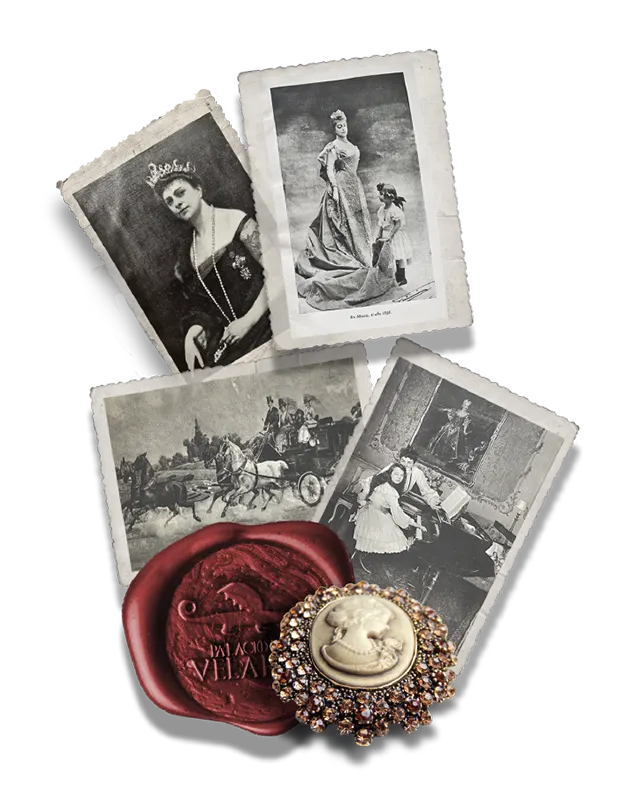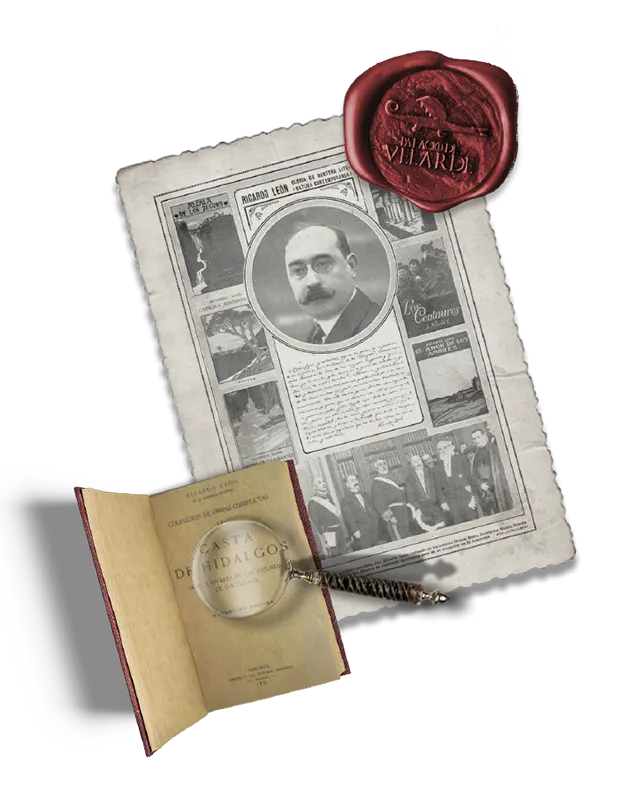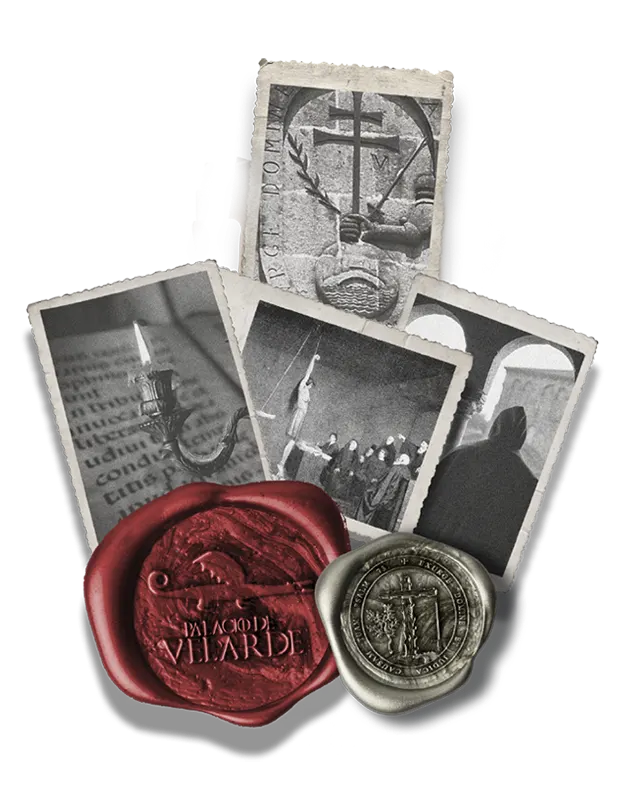TRINITY VON SCHOLTZ
maximum expression of Renaissance architecture in Cantabria.
Trinidad von Scholtz Hermensdorff was born in Malaga in 1867, into a wealthy merchant family with ancestors in Ronda. At the age of 21 she married Mexican diplomat Manuel Yturbe. Diplomatic activity led the couple to reside in various cities throughout Europe and to interact with the international aristocracy. When she was 25 years old, Trinidad gave birth to her only daughter, Piedad.
But unlike other women in her position, Trinidad never resigned herself to the role of wife and mother. In his palace in Madrid on San Bernardo Street, he gathered the intellectuals of the time and thus the idea of founding the Spanish Society of Friends of Art, aimed at protecting the heritage.
He also stood out for his activity as an art collector, acquiring works in antique shops and promoting contemporary creation. One of the exhibitions he promoted recovered the memory of the Spanish regional costume and became the seed of the current Museo del Traje.
Many of the cultural events he organized were charitable in nature. In 1911, on the occasion of the inauguration of the Hotel Reina Victoria, he spent a few days in Ronda. It was then that he decided to buy the Moorish King’s House.


RICARDO LEÓN Y ROMÁN
Novelist and poet, member of the RAE (Spanish Royal Academy)
Ricardo Francisco León Román Jaramago Guraya was born in Barcelona, although he spent his childhood and adolescence in Badajoz and especially in Málaga, the latter city with which he fully identified. He is the most widely read Spanish writer in the second decade of the 20th century and one of the most published authors during his lifetime.
In 1901, after winning a competitive examination at the Bank of Spain, in October he was transferred to work at the Santander branch.
Santillana del Mar and the nearby towns forged part of his literary personality, with his proximity to Galdós, Escalante and Menéndez Pelayo.
Villa that inspired him to write the novel, “Casta de hidalgos” (1908) in which he faithfully describes the population of Santillana del Mar and the social state in which the population was, which serves as a framework for the novel. It was his first great success and a best-seller at the beginning of the century.
León had Antonio Maura as his literary and academic godfather, was a member of his party and even appeared on one of his electoral lists, although unsuccessfully.
His candidacy had been proposed by Echegaray, Rodríguez Marín and Maura himself.
PEDRO VELARDE Y VILLA
Inquisitor Commissary General of Crusade
Pedro Velarde y Villa, “el Prior” also known as “Sr. de Las Arenas” because of the square where the primitive tower that was Velarde’s Palace in the middle of the 16th century and twin of another one located in Cantón de Santillana street was located.
Son of Rodrigo Fernández Velarde and María Fernández de Villa, also natives of Santillana del Mar and patrons of the chapel of San Juan de la Colegiata, who testate in 1528.
In his youth, before embracing the ecclesiastical state, he was married to Doña Mariana de Terán, from this marriage was born his only son, Alonso Velarde, heir to the Velarde Palace and founder of the Dominican Convent in 1592, the year in which the Order of Saint Dominic arrived in Santillana del Mar under the patronage of Alonso de Velarde. The Dominican friars settled in the house of Las Arenas or Palacio de Velarde and other nearby houses, placing themselves under the patronage of the Queen of Heaven (“Regina Coeli”); until the monastic complex began its construction in 1612 on the outskirts of the town, when the friars moved to the first Dominican foundation in Cantabria.
After his time as a provisor in the bishoprics of Burgos, Palencia, Salamanca and Cuenca, Pedro Velarde was appointed president of the tribunal of the Holy Office in Toledo. This, together with his closeness to the Inquisitor General, Diego de Espinosa, helped him to gain a place in the Council of the Inquisition, which he joined in 1572.

Do you want to live the experience? Come today from 11:00 till 15:00h and 16:00 till 21:00h (last session 20:30)







